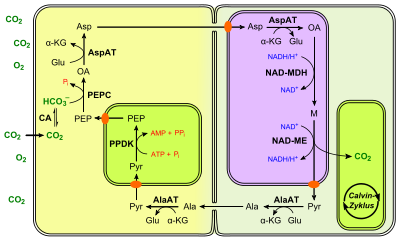Although most power plants currently use pulverized coal boiler technology which reaches around 50% of the world's electricity generation, the use of grate combustor boiler technology and fluidized bed boilers is also increasing. Pulverized coal boiler is mainly used for very large capacity plants (> 100 MW), while for ordinary medium capacity uses fluidized bed technology (between 20-100 MW) and for smaller capacity with combustor grate (<20 MW). The advantage of boiler boiler combustion and fluidized bed technology is fuel flexibility including tolerance to particle size. Various agricultural waste, municipal waste, used tires and so on can be used as fuel. When the pulverized coal boiler requires a small particle size (1-2 cm) like sawdust so that it can be atomized on the pulverizer nozzle, the combustor grate and fluidized bed the particle size of gravel (max. 8 cm) can be accepted. Based on these conditions agricultural waste, namely PKS has a great opportunity as fuel for these boilers.
 |
| 49 MW Biomass Powerplant with Fluidized Bed Technology in Japan that use PKS as fuel, has been operating since 2015 |
To be able to fuel the boiler combustor grate and fluidized bed boiler PKS can be used directly, without additional pretreatment. More specifically for fluidized bed boilers, circulating fluized beds (CFB) boilers are more suitable for PKS compared to boiler fluidized bed (BFB) boilers, for more details read here. Then is PKS not suitable for pulverized coal boiler? There are several things that need to be considered for the use of PKS in pulverized coal boilers. The first thing that can be done is to reduce PKS particle size to a maximum of 2 cm so that it can be atomized in a pulverized system. The second thing to note is the percentage of PKS in coal, or the term cofiring. Unlike a grate and a fluidized bed combustor that can be flexible with various types of fuel, pulverized almost all use coal only. Of course it can also be pulverized to be replaced with biomass, especially PKS, but there are specific things that distinguish biomass and coal fuels, namely ash content and ash chemistry. Both of these things greatly influence the combustion characteristics in the pulverized system.
Coal ash content is generally greater than biomass, besides that coal ash chemistry is very different from biomass ash chemistry. Biomass ash has lower an inorganic than coal, but the alkali content in biomass can change the properties of coal ash, especially aluminosilicate ash. Practically, if you want to change the pulverized system from coal to biomass, especially PKS, it is necessary to modify the power plant and this is also not cheap, but if you want without modification or just a small modification of the power plant is needed, namely the cofiring method. Biomass cofiring with coal in small portions for example 3-5% does not need to modify the pulverized power plant. For example, Shinci in Japan with a capacity of 2 x 1,000 MW of supercritical pulverized fuel with 3% cofiring requires 16,000 tons / year of biomass and no modification, likewise with Korea Shoutheast Power (KOSEP) 5,000 MW with 5% cofiring requiring 600,000 tons / year of biomass and also without modification. Why is the cofiring in the pulverized system discussed a lot? In addition to this type of generator, the most number with a very large electricity production capacity so as to be an effective means of reducing CO2 levels in the atmosphere which also automatically reduces coal use, also the use of biomass in cofiring has an effect on plant operations and the price of electricity produced. The other main reason is because is the cheapest way to enter renewable sector especially for big coal powerplants.
 |
| Denmark 700 MW Studstrup power station conducts cofiring up to 20% with straw |
Combustor grate technology, fluidized bed and pulverized are basically combustion technologies. Combustion technology is one of the 3 thermal biomass processes that are widely applied, with the other two are gasification and pyrolysis. Gasification as well as pyrolysis can also be used for electricity production, but its use is not as much as combustion technology and its electricity production capacity is generally also small. Almost the same as a combustor grate and fluidized bed, fuel for gasification and pyrolysis is also flexible, including coal and PKS. In gasification technology mainly to maximize gas products (syngas) while in pyrolysis to maximize its solid products. PKS can be pyrolyzed to produce charcoal while coal will produce coke if it is pyrolyzed. Charcoal from PKS can be used for fuel, briquette production and activated charcoal while coke for steel smelting. Syngas is a pyrolysis by-product that can be used for electricity production while in gasification, syngas is the main product that can also be used for electricity production.
Why use PKS for the powerplant fuel? This is because PKS has almost the same characteristics as wood pellets, many are available and are cheap. Indonesia and Malaysia are the two main producers of PKS. PKS is produced from palm oil processing and considered as waste. With an area of Indonesian oil palm plantations reaching 12 million hectares in Indonesia and 5 million hectares in Malaysia, the number of PKS produced from both countries reached 15 million tons / year. The number of PKS in both countries exceeds the production of wood pellets from the United States and Canada, or the two largest producers of wood pellets today. And of course the United States and Canada cannot produce PKS, because they do not have oil palm plantations, but Indonesia and Malaysia can also produce wood pellets because they have large forests. The production of wood pellets in Indonesia and Malaysia is still small today, which is less than 1 million tons / year, but the production of PKS is quite large which can act as an initial driver of bioeconomy in the countries and supply the PKS biomass to Europe.


























